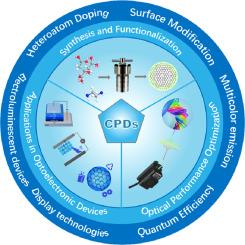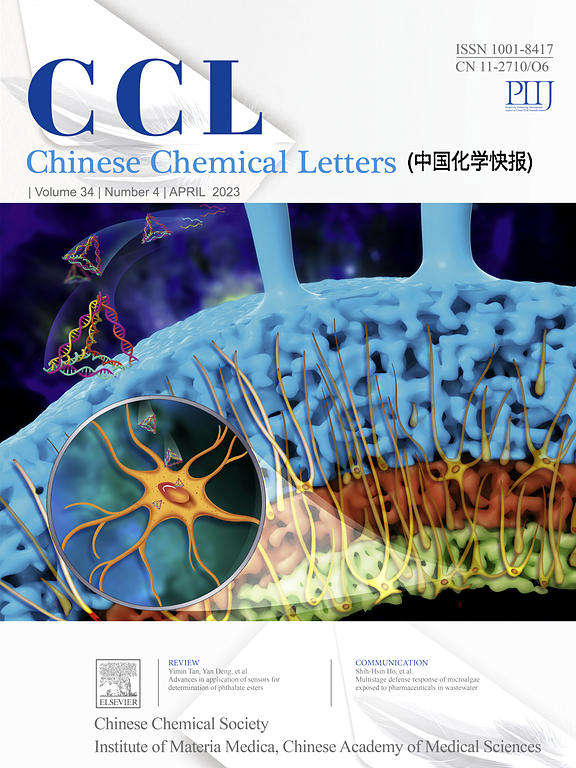碳化聚合物点:照明合成途径、光学前沿和光电突破
IF 8.9
1区 化学
Q1 CHEMISTRY, MULTIDISCIPLINARY
引用次数: 0
摘要
自从二十年前碳化聚合物点(CPDs)被发现以来,这一新兴的碳基纳米材料家族迅速崛起。CPDs由于其灵活的前体和合成方法、可调的光致发光(PL)特性和优异的生物相容性,在传感、催化、能源和生物医学领域得到了广泛的应用。本报告介绍了在CPD前体领域取得的进展,阐明了它们的发光特性和潜在的机制,并探讨了CPD基材料的各种应用。它通过深入研究几个相互关联的章节,全面解决了关键问题:最初探索cpd所表现出的有趣的荧光和余辉特性,随后揭示了这些现象背后的复杂发光机制,强调了cpd可控合成的关键方面,并最终在精确构建用于激光和电致发光器件的复合材料方面达到了高潮。此外,本报告旨在为CPDs的受控合成和扩大应用提供交流和帮助。本文章由计算机程序翻译,如有差异,请以英文原文为准。

Carbonized polymer dots: Illuminating synthesis pathways, optical frontiers, and photoelectronic breakthroughs
Since the discovery of carbonized polymer dots (CPDs) two decades ago, this emerging family of carbon-based nanomaterials has rapidly risen to prominence. CPDs have found widespread applications in sensing, catalysis, energy, and biomedicine due to their flexible precursors and synthesis methods, tunable photoluminescence (PL) properties, and excellent biocompatibility. This report presents the advancements made in the realm of CPD precursors, elucidates their luminescence properties and underlying mechanisms, and explores the diverse applications of CPD-based materials. It comprehensively addresses key issues by delving into several interconnected chapters: Initially exploring the intriguing fluorescence and afterglow properties exhibited by CPDs, subsequently unraveling the complex luminescence mechanisms that underlie these phenomena, emphasizing the crucial aspect of controllable synthesis of CPDs, and ultimately culminating in the precise construction of composite materials tailored for applications in laser and electroluminescent devices. Furthermore, this report aims to provide communication and assistance for the controlled synthesis and expanded applications of CPDs.
求助全文
通过发布文献求助,成功后即可免费获取论文全文。
去求助
来源期刊

Chinese Chemical Letters
化学-化学综合
CiteScore
14.10
自引率
15.40%
发文量
8969
审稿时长
1.6 months
期刊介绍:
Chinese Chemical Letters (CCL) (ISSN 1001-8417) was founded in July 1990. The journal publishes preliminary accounts in the whole field of chemistry, including inorganic chemistry, organic chemistry, analytical chemistry, physical chemistry, polymer chemistry, applied chemistry, etc.Chinese Chemical Letters does not accept articles previously published or scheduled to be published. To verify originality, your article may be checked by the originality detection service CrossCheck.
 求助内容:
求助内容: 应助结果提醒方式:
应助结果提醒方式:


